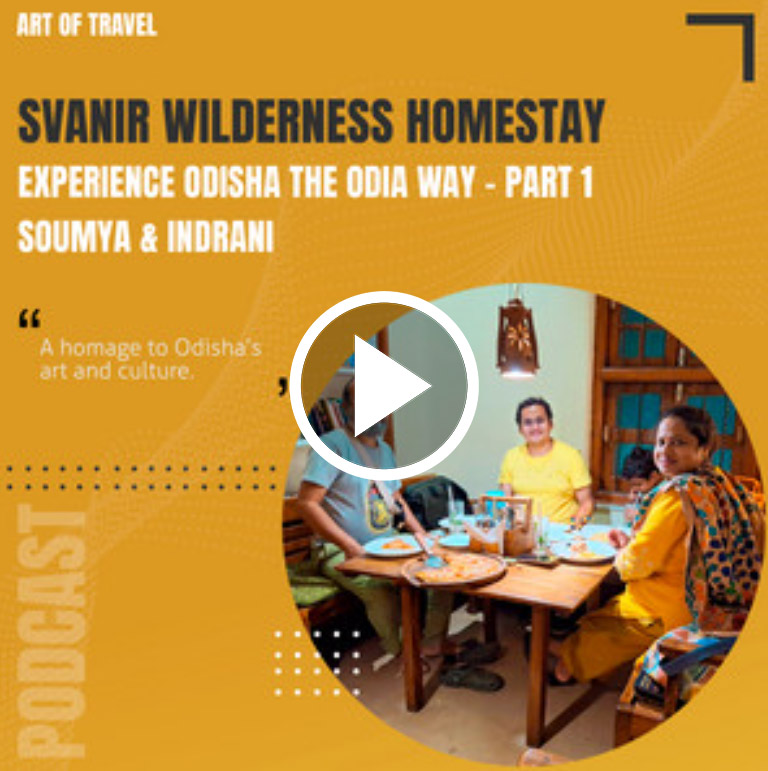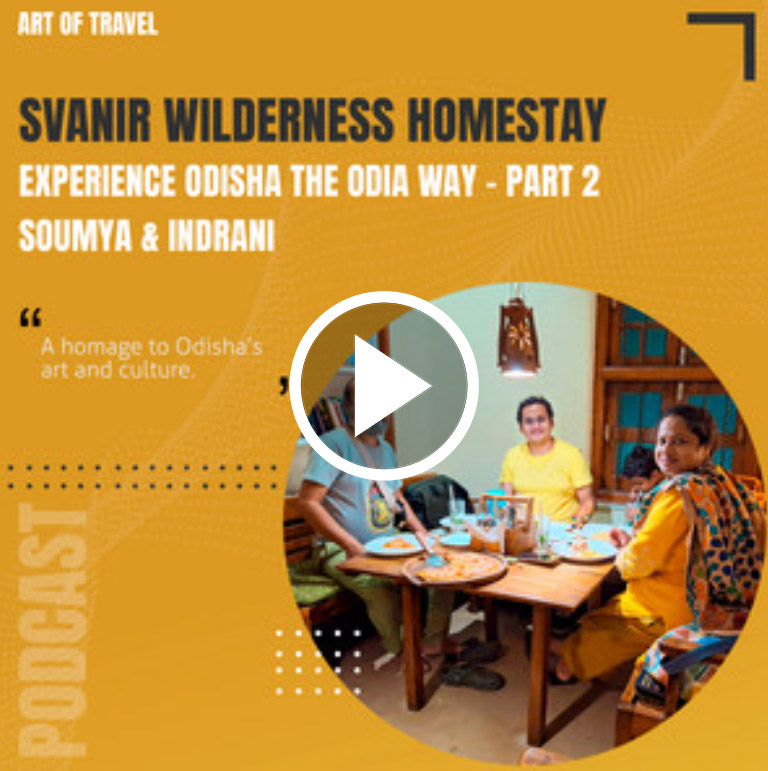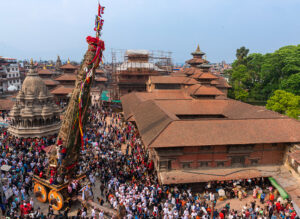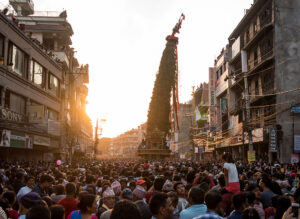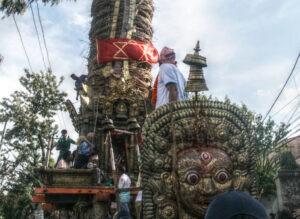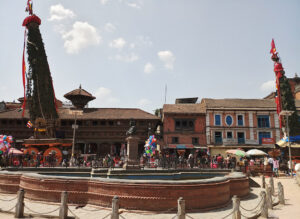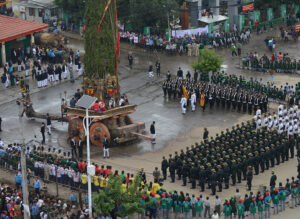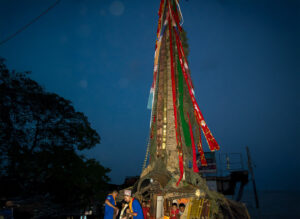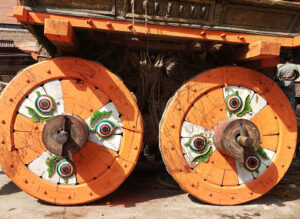
art of travel
What’s New
The Latest Product Updates from India
Compiled by Soma Paul, Product Manager, Destination Knowledge Centre
STAYS TO WATCH OUT FOR
New Hotels
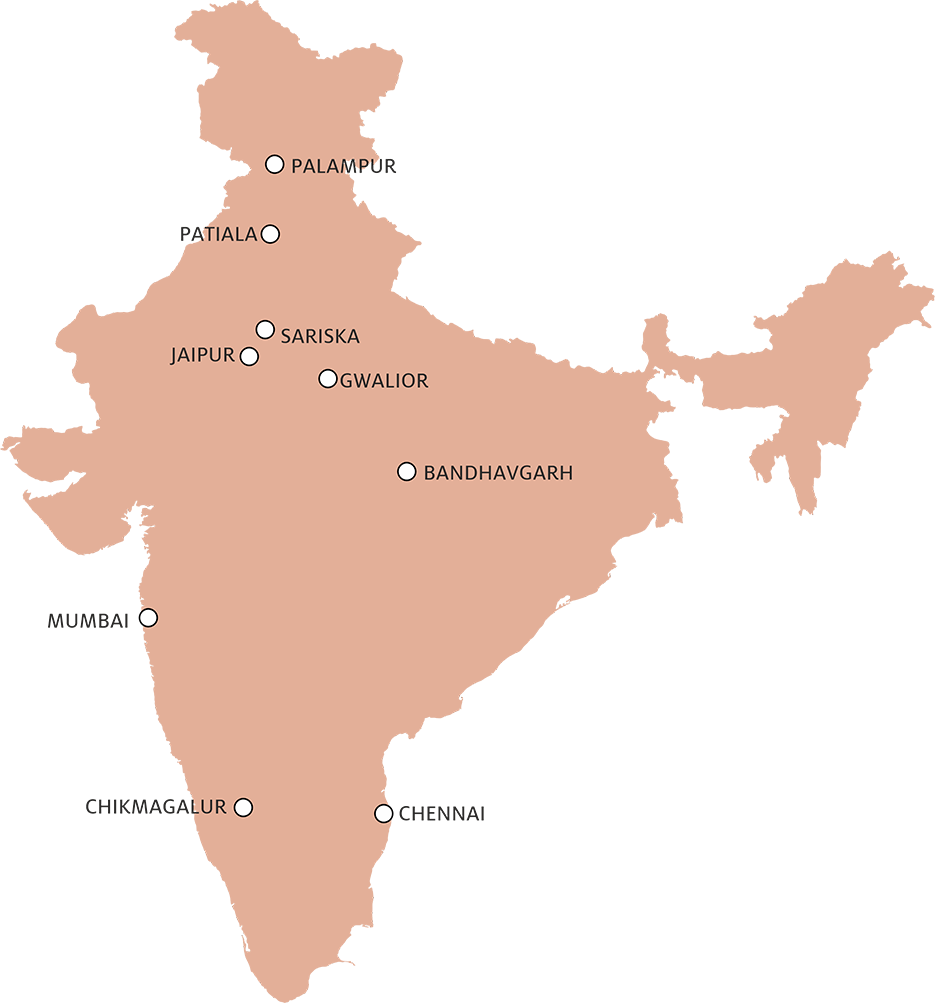
- Seclude, Palampur, Himachal Pradesh
- Ran Baas The Palace, Patiala, Punjab
- Padmaa Haveli, Jaipur, Rajasthan
- Sariska Lodge, Sariska, Rajasthan
- Narwar Lakefront, Shivpuri near Gwalior, Madhya Pradesh
- The Oberoi Vindhyavilas, Bandhavgarh, Madhya Pradesh
- Primrose Villas, Chikmagalur, Karnataka
- Fairmont Mumbai, Maharashtra
- Pullman Chennai Annasalai, Chennai, Tamil Nadu
We Are Excited About
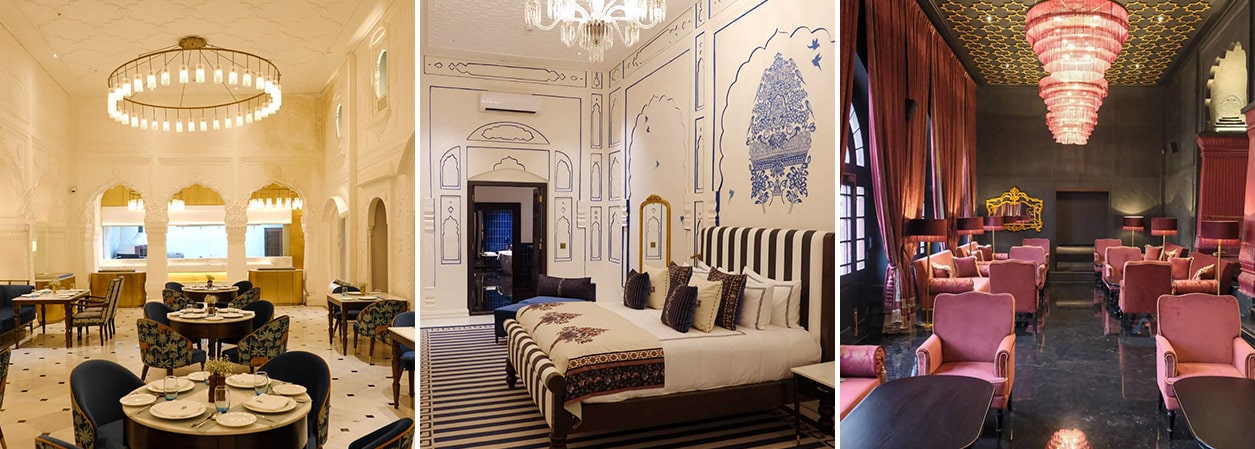
Ran Baas The Palace, Patiala, Punjab
Ran Baas – The Palace by The Park is Punjab’s first luxury palace hotel, set within Patiala’s historic Qila Mubarak complex. Once the Maharaja’s guesthouse, this 18th-century gem has been beautifully restored for an authentic royal stay. The 33 elegant suites each have their own charm—some with stunning views of the fort. Start your day with breakfast beneath the breathtaking frescoes of the Rang Mahal, an 18th-century masterpiece, and wind down to soulful Sufi melodies at dinner. The best way to travel to Patiala is from Chandigarh, approximately 1.5 hours away by car.
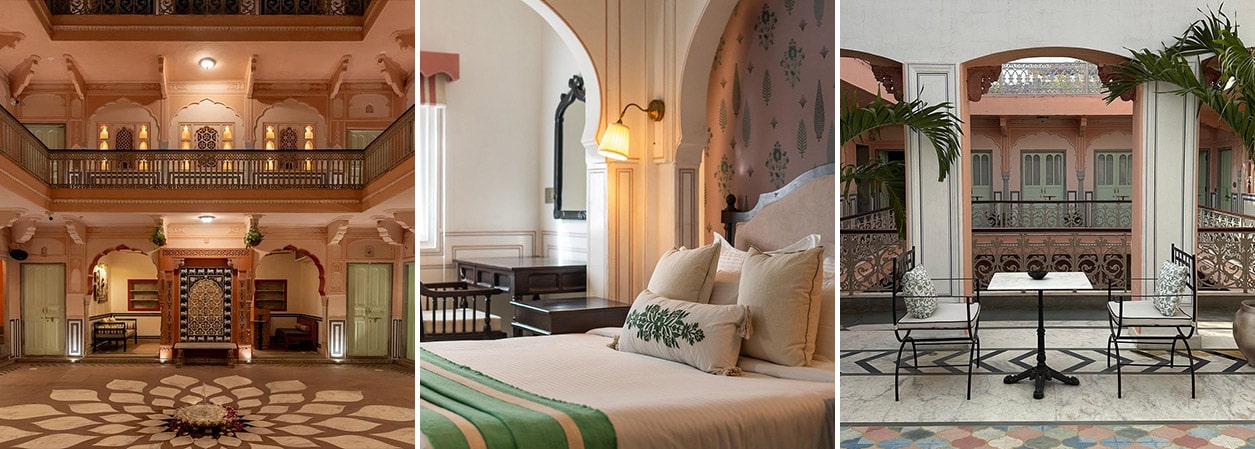
Padmaa Haveli, Jaipur, Rajasthan
Stay in the heart of Jaipur’s old city at this beautifully restored 18th-century haveli. The six heritage and nine luxury suites are spacious and uniquely designed, making it feel more like a home than a hotel. Enjoy delicious vegetarian meals in two cosy dining spaces, take a dip in the heated rooftop pool, and soak in the lively buzz of the bazaars from the terrace. Since Padmaa Haveli is located in the narrow lanes of the Pink City, the hotel provides e-rickshaws to get you to and from the nearest car drop-off point.

The Oberoi Vindhyavilas, Bandhavgarh, Madhya Pradesh
The Oberoi group has arrived in Bandhavgarh, bringing its signature luxury to the jungles of Central India with the Vindhyavilās. With just 19 elegant tents and 2 villas with private pools, it is located only 20 minutes from the Tala zone. Between game drives, kick back at the Oberoi Spa, take in the jungle’s quiet magic, or savour a fantastic meal. Whether you’re chasing big-cat sightings or simply embracing the thrill of nature, this is Bandhavgarh at its finest.
EXPERIENCES TO WATCH OUT FOR
New Experiences

- Bikaner’s Heritage Trail, Bikaner
- The Art of Temple Jewellery, near Kanyakumari, Tamil Nadu
We Are Excited About
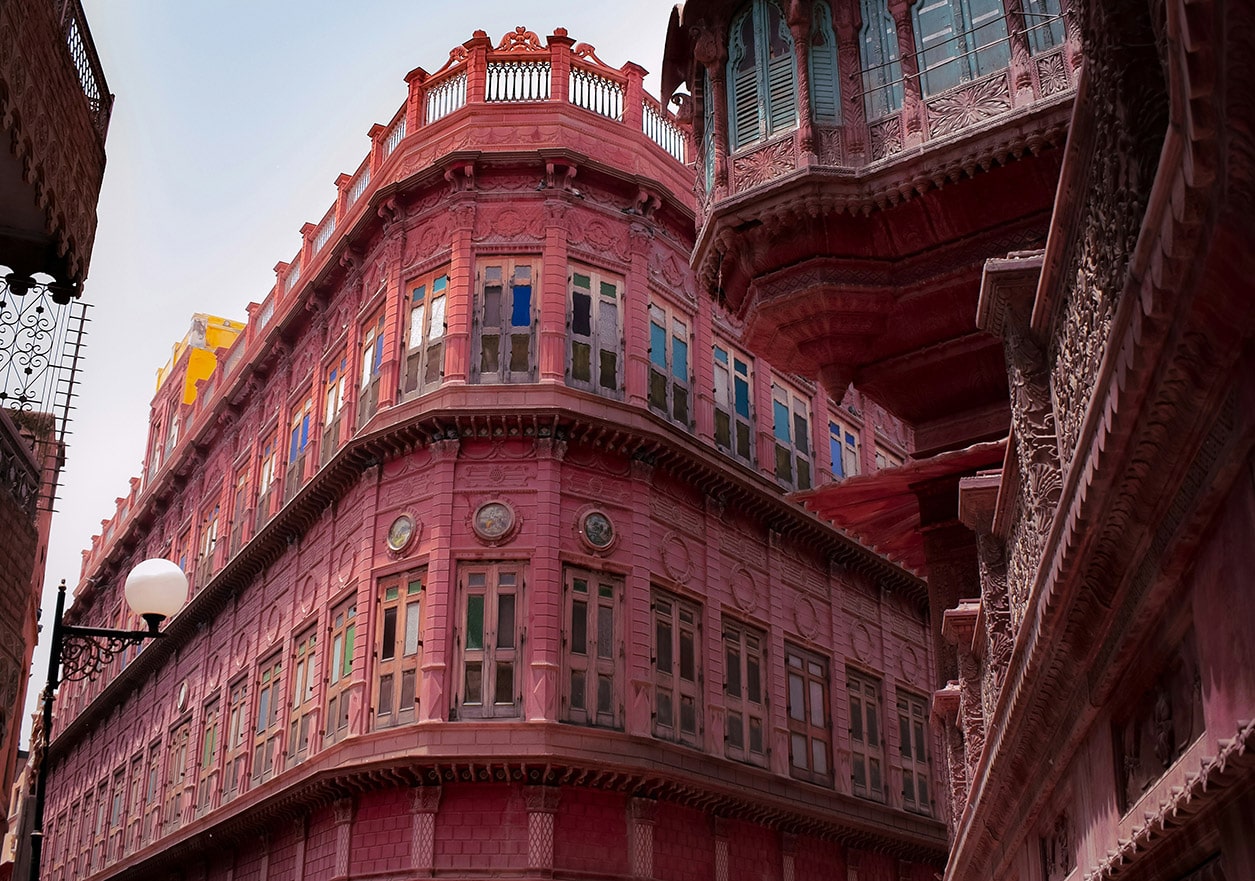
Bikaner’s Heritage Trail, Bikaner
The Bikaner Heritage Trail offers a glimpse into the city’s soul, weaving through iconic landmarks, bustling markets, and culinary delights. Explore intricate local art, interact with artists, and admire exquisitely carved red sandstone havelis that whisper tales of the past.
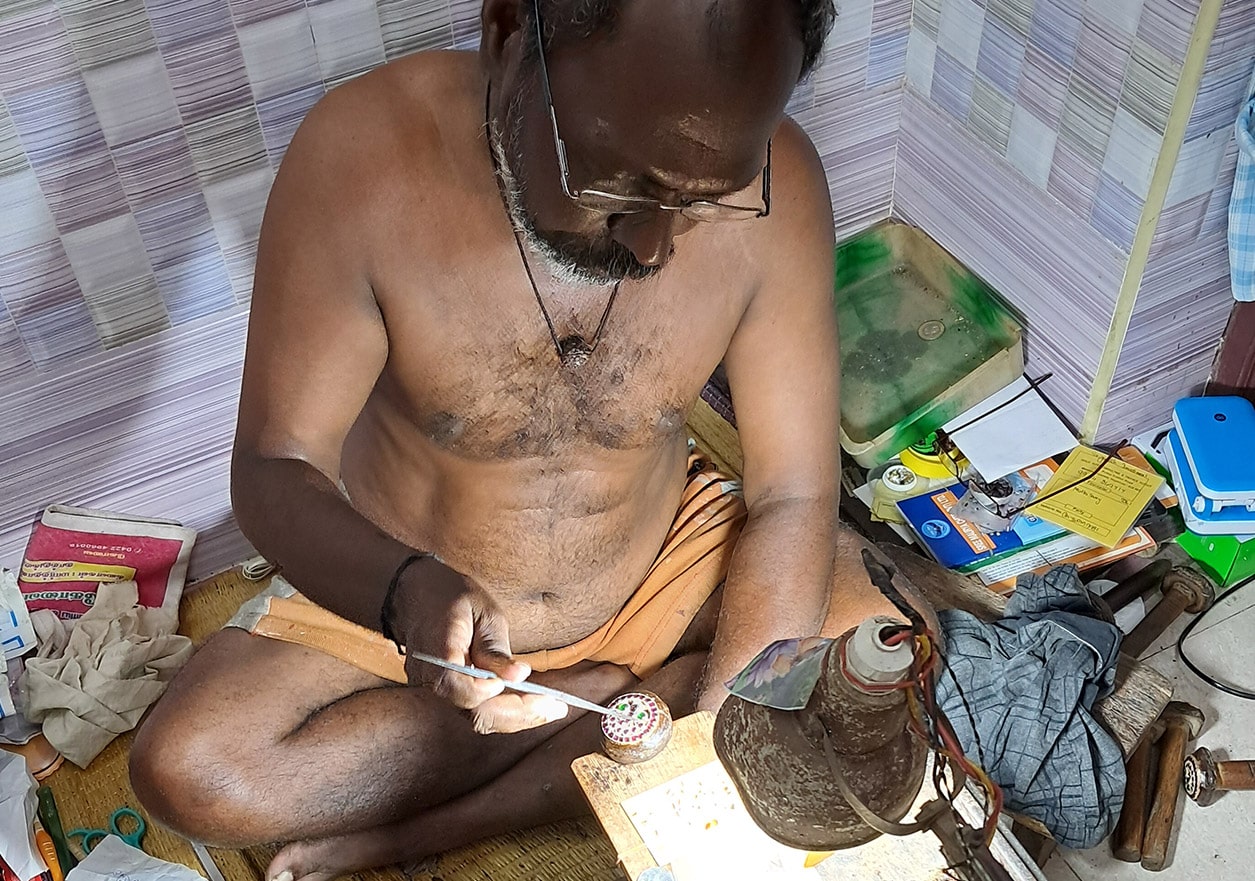
The Art of Temple Jewellery, near Kanyakumari, Tamil Nadu
A visit to this small village near Kanyakumari is a rare opportunity to witness the art of temple jewellery making, a tradition that dates back to the 9th century. Inside homes-turned-workshops, each floor is dedicated to a different stage of the process. Watching artisans meticulously bring history to life here isn’t just about admiring their skill—it’s an immersive journey into Tamil Nadu’s lesser-known heritage.
Write to your relationship manager for more details.
ITINERARY OF THE MONTH
History, Culture & Coastal Charms
Chennai – Puducherry – Tharangambadi – Swamimalai – Dindigul – Rameswaram – Thoothukudi – Kanyakumari – Varkala – Thiruvananthapuram

Highlights of the Tour
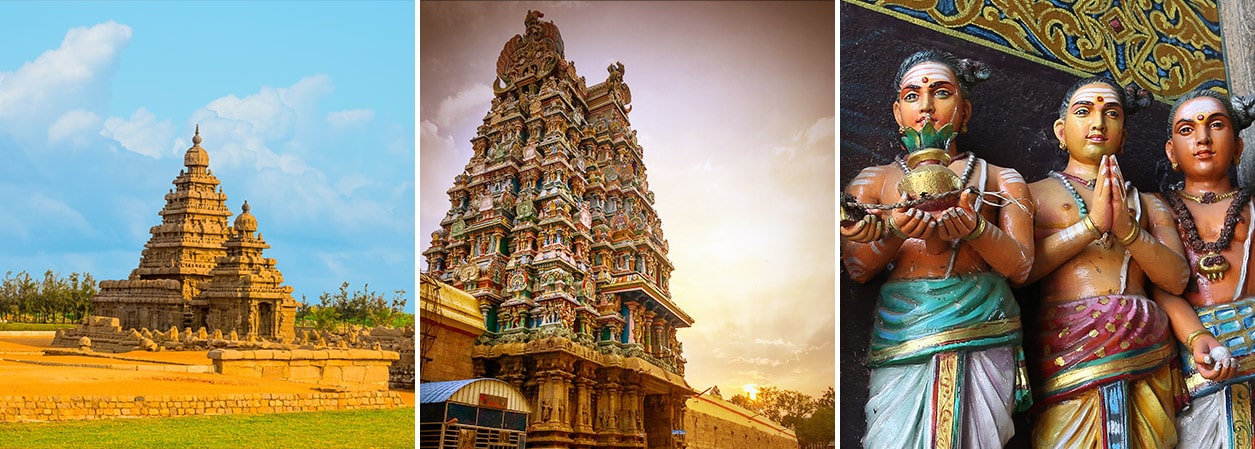
- Mahabalipuram’s Stone Carvings – Walk through centuries of history and marvel at massive rock-cut wonders that have stood the test of time.
- Explore Puducherry – Cycle through Tamil and Muslim quarters, wander through White Town’s colonial-era streets, then hop on a rickshaw to soak it all in.
- Food & Creole Cooking – Get a taste of Puducherry with a local food tour, then try your hand at Creole cooking, where Tamil and French flavours come together beautifully.
- Chidambaram & Tharangambadi – Visit the grand Nataraja Temple, a masterpiece from the Chola era, before exploring Tharangambadi’s Danish colonial past.
- Brihadeeshwara Temple, Thanjavur – Stand beneath this UNESCO-listed Chola temple and take in its sheer scale and intricate carvings while attending the night ceremony.
- Madurai & Meenakshi Temple – Experience the buzz of Madurai, home to the stunning Meenakshi Temple and the impressive Thirumalai Naikan Palace.
- Rameshwaram & Danushkodi – Walk through the sacred halls of Ramanathaswamy Temple, then head to Danushkodi, an abandoned town at India’s eastern edge, once thriving until a cyclone wiped it out in 1964. It’s the last stop before the ocean—and Sri Lanka.
- Silambam & Village Life – Watch Silambam, an ancient Tamil martial art, and get a glimpse of rural life with traditions like kollam making.
- Kanyakumari – See the point where three seas meet.
- Varkala & Anchuthengu Fort – Unwind by the sea in Varkala, then visit the historic fort with stunning coastal views.
Write to your relationship manager for the detailed itinerary
RESTAURANT TO WATCH OUT FOR
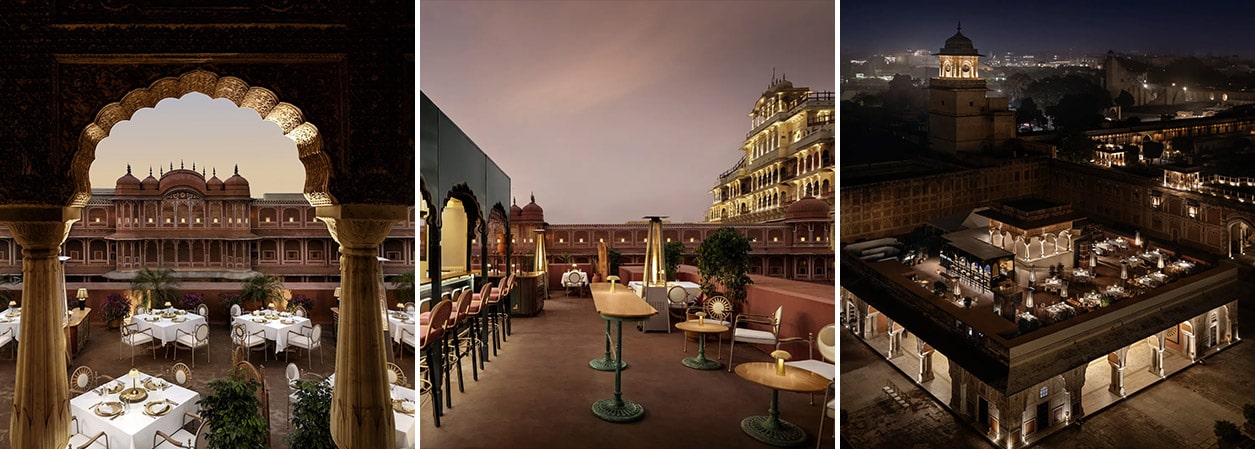
Sarvato, Jaipur
Sarvato sits on the rooftop of Jaipur’s City Palace, offering one of the most stunning views in town. But it’s not just about the location—it’s about the food. The menu dives deep into Rajasthan’s culinary heritage, from royal kitchens to the dishes that sustained everyday communities and travellers over the centuries. Their 6-course tasting menu isn’t just a meal; it’s a journey through the state’s flavours and stories.
Odisha Report Teaser
Stay Tuned for the detailed Odisha Report by Kuntil Baruwa, Explorer, Destination Knowledge Centre.
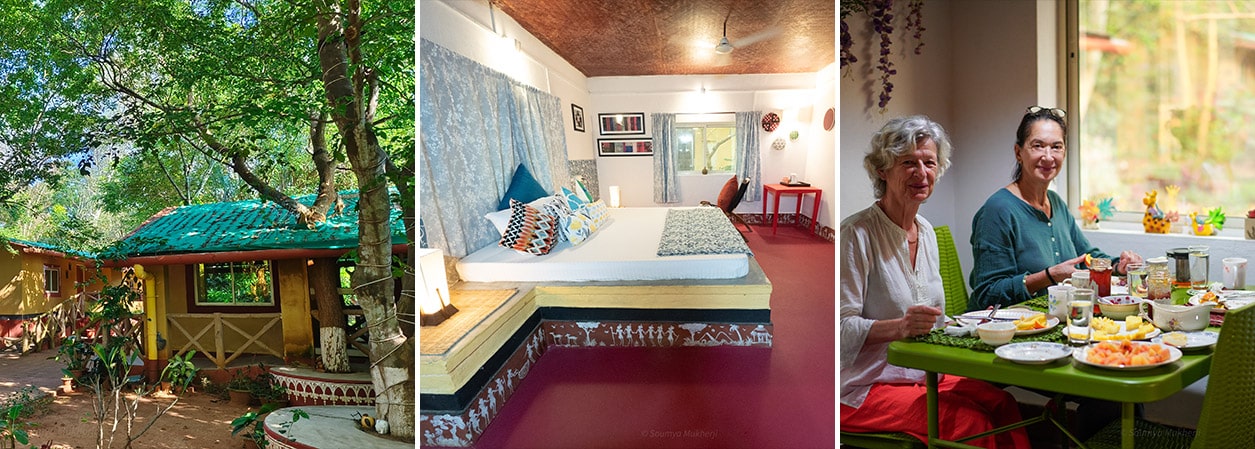
Accommodations I stayed (excerpts from the report)
Svanir Homestay – A Family-Run Eco Retreat in Bhubaneswar
Svanir Homestay isn’t just an accommodation—it’s a home, lovingly run by the Mukherji family, where three generations live under one roof. Located in the serene outskirts of Bhubaneswar, this eco-conscious retreat offers a warm, immersive experience for guests seeking a deeper connection with Odisha’s rich artistic and architectural heritage.
With only 4 thoughtfully designed AC rooms, each themed around Odisha’s artistic traditions, Svanir is a brilliant showcase of culture and craftsmanship. The Mukherji’s have personally collected artefacts from various artists across the state, ensuring every corner of the homestay reflects the region’s cultural essence. From handcrafted terracotta pieces dotting the gardens to architectural elements inspired by Odisha’s tribal heritage, Svanir is a living gallery of local craftsmanship.
A stay here is not just about comfort but also about sustainability and responsible tourism, making it an ideal choice for guests who appreciate authenticity, nature, peace and quiet, and a touch of creative storytelling in their journeys.
Delicious home-cooked food and great conversations included.
YAYS 👍
✔ Unique Eco-Stay Experience – A nature-focused retreat, offering an authentic alternative to standard hotels.
✔ Warm, Personalised Hospitality – Run by a well-travelled welcoming family, creating a homely and culturally immersive experience.
✔ Beautiful Natural Surroundings – Located near Chandaka Dampara Sanctuary, perfect for birdwatching and relaxation.
✔ Spacious Cottages with Local Charm – Inspired by tribal architecture, blending rustic aesthetics with modern comfort, including lightning-fast Wi-Fi.
✔ Delicious, Home-Cooked Meals – Freshly prepared by the ladies of the house with local organic ingredients, ensuring both taste and hygiene. Loved the Shepherd Pie.
✔ Sustainable & Responsible Tourism – Supports local communities and follows eco-conscious practices.
✔ Quiet & Relaxing Atmosphere – Ideal for unwinding after a busy sightseeing itinerary.
✔ No Events—No Matter How Big or Small – Svanir is completely dedicated to FITs. They do not cater to any kind of events, big or small, ensuring a peaceful stay without unexpected last-minute disruptions.
✔ Conversations –
✔ Fascinating Conversations on Water, Nature, and Plants – Senior Mukherji, a retired Indian Forest Service official, is always happy to share his deep knowledge of the environment. He has even designed a special tour within the premises of Svanir, focusing on these topics for interested guests.
✔ Delightful Conversations on Odisha’s Terracotta Tradition – The daughter-in-law of the family is passionate about Odisha’s rich terracotta heritage. She happily showcases the intricate pieces placed around the garden, sharing the fascinating stories behind each one.
NAYS 👎
❌ Proximity to City Attractions – Located outside Bhubaneswar’s main sights, requiring extra travel time.
❌ No Alternative Dining Options – Only in-house meals available; guests looking for bars, cafes, or social evening spots may find this limiting.
❌ Not a Full-Service Property – No 24/7 room service, or facilities like pools or spas.
❌ Transport Must Be Prearranged – No easy access to taxis or public transport; guests have to rely on pre-booked vehicles.
❌ No Showers in Bathrooms – A conscious choice by the owners to conserve water and stand in solidarity with the neighbouring village, where water is scarce. Instead, guests are encouraged to use traditional bucket baths. Water is also recycled for gardening and other sustainable efforts.
Podcast
Stories from India
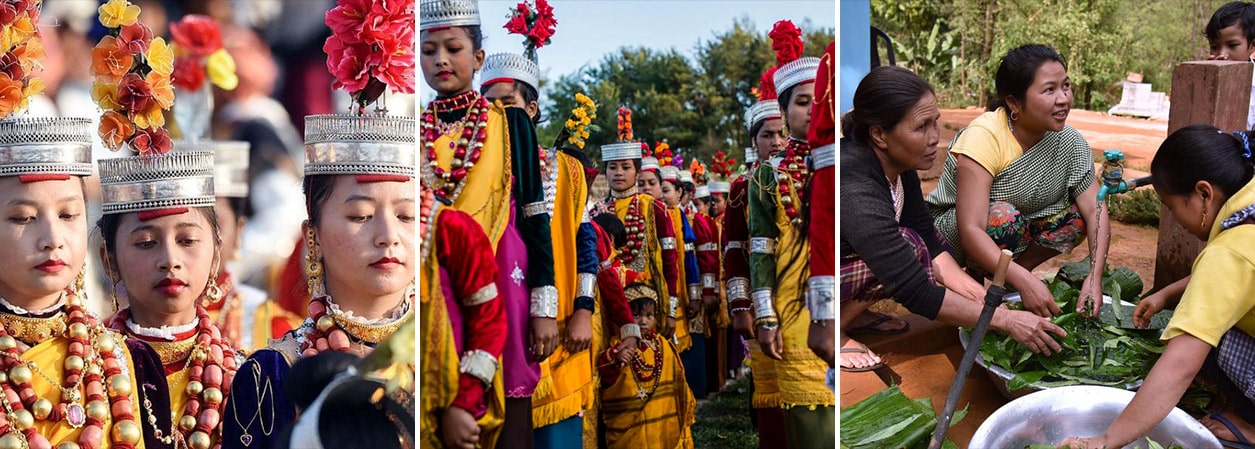
The Matrilineal Khasis
From the Research Hub, Destination Knowledge Centre
Meghalaya, one of the eight states of Northeast India, is home to one of the world’s last remaining matrilineal societies. Here, women inherit property, carry forward the family name, and take centre stage in public life.
But not everyone is happy about it.
The men’s rights group Syngkhong Rympei Thymmai (SRT)—which translates to Home Hearth Restructured—believes men in Meghalaya are the “weaker” sex. They argue that men are perpetual outsiders, neither fully belonging to families they are born to nor the ones they marry into. Since the 1990s, SRT has been campaigning for men’s rights, stating: “We do not want to bring women down … we just want to bring the men up to where the women are.”
This isn’t the first time Meghalaya’s men have tried to challenge the system. Back in the 1960s, another group—Iktiar Longbriew Manbriew (ILM), meaning Right to Live—made a similar attempt, only to be chased away from public meetings by knife-wielding women.
The Khasi, Jaintia, and Garo tribes of Meghalaya have followed a matrilineal system for centuries. Lineage and descent are traced through the mother’s clan, children take their mother’s surname, and the youngest daughter inherits the ancestral property. She also bears the responsibility of caring for elderly or unmarried relatives. If there are no daughters, the inheritance passes to the wife’s sisters and their daughters. If no female heirs exist, the property goes to the clan. However, this applies only to ancestral property—self-earned assets can be distributed among siblings.
But does this system truly empower women? Not exactly.
Women in Meghalaya may enjoy more social mobility than their counterparts elsewhere in India, but the matrilineal system itself wasn’t designed to be empowering. It was created by men, in an era when they frequently left for war with no certainty of returning. Even today, the youngest daughter—who technically inherits everything—cannot sell any property without the explicit consent of her maternal uncle.
And when it comes to leadership? Women are largely absent. The Dorbar Shnong, the traditional Khasi village governing body, doesn’t allow women to contest elections. Meanwhile, the social expectation that men bear little responsibility for the family has led to troubling levels of alcohol abuse, broken homes, and adultery in Meghalaya.
Lately, the Khasis have been debating the Inheritance of Property Bill, 2021, which proposes an “equitable distribution” of parental property among all siblings. While the bill is unlikely to pass, it has sparked important conversations about landlessness—an issue affecting nearly 70% of Khasi families. Many argue that reform is necessary, but how to balance tradition with change remains an open question.
Sustainability and Us
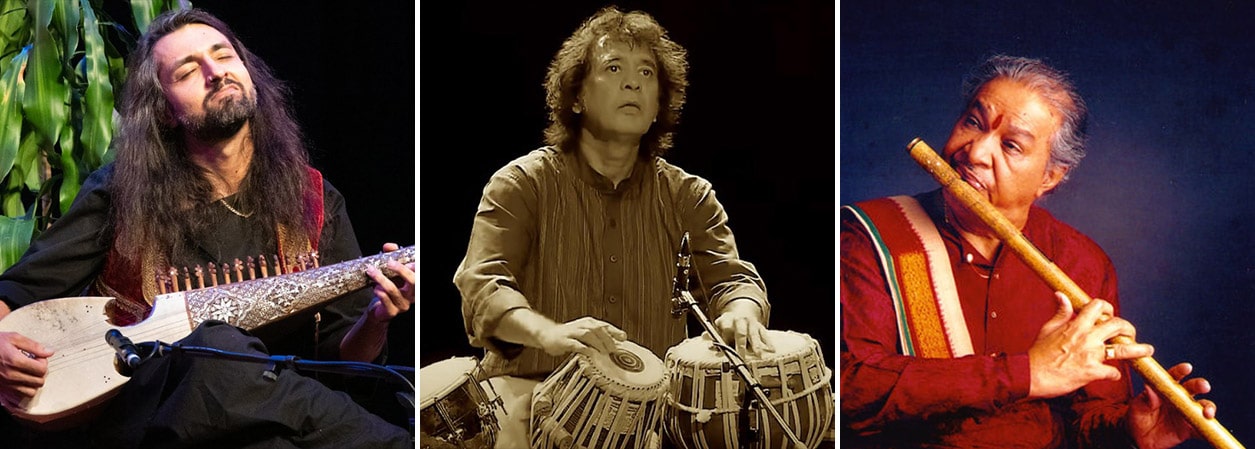
Melodies from Nature: Traditional Indian Instruments with a Green Soul
By Inderjeet Rathod, Product Manager, Destination Knowledge Centre
India’s musical traditions date back thousands of years, deeply connected to its spiritual and cultural identity. At the heart of this music lies a vast array of instruments. Often made from locally sourced materials such as wood, bamboo, and clay, these musical instruments serve a dual purpose: creating beautiful sounds while honouring the environment. These instruments are about more than just the melodies they create—it’s about listening to the earth and finding its voice in the rhythms that bring it to life.
String Instruments: Nature’s Resonance
One of the oldest and most iconic string instruments in Indian classical music is the Veena. Picture a large, elegant instrument with a long neck and a rounded body, traditionally carved from the wood of the jackfruit tree. Its sound is as rich as its shape—full-bodied, deeply resonant, and with the ability to express emotions tied to time, seasons, and moods. The Veena is like the spiritual cousin of the guitar, but with far more meditative tendencies.
Then there’s the Ektara, a one-stringed wonder that’s as minimalist as a bamboo stick with a gourd at one end. Its sound is so soulful, it could almost convince you that it’s narrating ancient stories from an old nomadic bard. The Ektara is common in devotional songs and spiritual gatherings, singing its simple tunes like wise elder recounting tales of devotion and life. It’s all about simplicity and soulfulness.
The Rabab, popular in North India, is shaped like a tiny wooden boat with thin strings stretched across it. Its soft, mellow sound feels like a gentle wave—perfect for accompanying stories and poetry, especially in the mystical world of Sufi music. It is less “loud and proud” and more “quietly profound,” but don’t be fooled; it can stir the deepest emotions when you least expect it.
Wind Instruments: The Voice of the Wind
India’s wind instruments have a way of capturing nature’s beauty in sound. Take the Bansuri (bamboo flute), for example. It’s a slender tube of bamboo, often with holes that are strategically placed to release melodies that are as sweet as the wind’s whispers. The Bansuri is a constant companion in Indian classical music, where it plays Raagas—complex patterns of sound that express time, mood, and nature. If you’ve ever wanted to feel like the wind itself is serenading you, the bamboo flute is your ticket.
Next, we have the Shehnai, a wind instrument with a wider, flared bell at one end. This one’s reserved for weddings and festivals, where it creates an atmosphere that’s both celebratory and spiritual. The Shehnai plays its role as a bridge between earthly joy and divine blessing, doing its best to keep everyone on the right spiritual track while also having a good time.
For something even more unique, meet the Pungi, the wind instrument played by snake charmers. Made from bamboo and a dried gourd, the Pungi has a distinctly captivating sound. The high-pitched, eerie tone it produces is enough to make you feel like you’re in an ancient ritual, perhaps on the brink of meeting a wise sage or a very confused snake. It is strange, and enchanting.
Percussion Instruments: Rhythms of the Earth
India’s percussion instruments are a world of their own, complex, rich, and—at times—impossible to resist tapping your foot to. The Tabla, consisting of two hand-played drums, one higher-pitched and the other deeper, is crafted from wood (often rosewood) and goat skin. The Tabla isn’t just an instrument; it’s a communication tool. It plays an essential role in Indian classical music, accompanying Raagas with rhythms that can make you feel like your heart is dancing.
The Mridangam, used in Carnatic music from South India, is a large, cylindrical drum made from jackfruit wood. It’s built to produce sounds as earthy as the soil itself, a perfect companion for the precise rhythms that define Carnatic music. If the Tabla is the chatty cousin, the Mridangam is the calm, collected uncle who quietly commands respect from the room. Both are incredibly skilled at keeping time—but one’s more likely to throw in an unexpected twist.
And let’s not forget the Ghatam, a large clay pot that sounds like a heartbeat when struck. This humble pot adds a solid, grounding rhythm to Carnatic ensembles, reminding us that music can be as simple as tapping the earth itself. The Ghatam might not win any beauty contests, but it sure knows how to keep things lively.
A Symphony of Sustainability
These traditional Indian instruments are more than just instruments—they are a direct reflection of the harmonious relationship between culture and the environment. Whether it’s the somber tones of the Veena or the energetic beats of the Tabla, each instrument brings nature’s voice into our world. It’s as though the earth has been singing for thousands of years, and we’ve only just started listening.
In a world increasingly focused on sustainability, these instruments offer a perfect reminder: it’s possible to make timeless music while honouring the planet. After all, if the earth is going to keep singing, we’d better make sure we’re listening—and playing along.
Explore
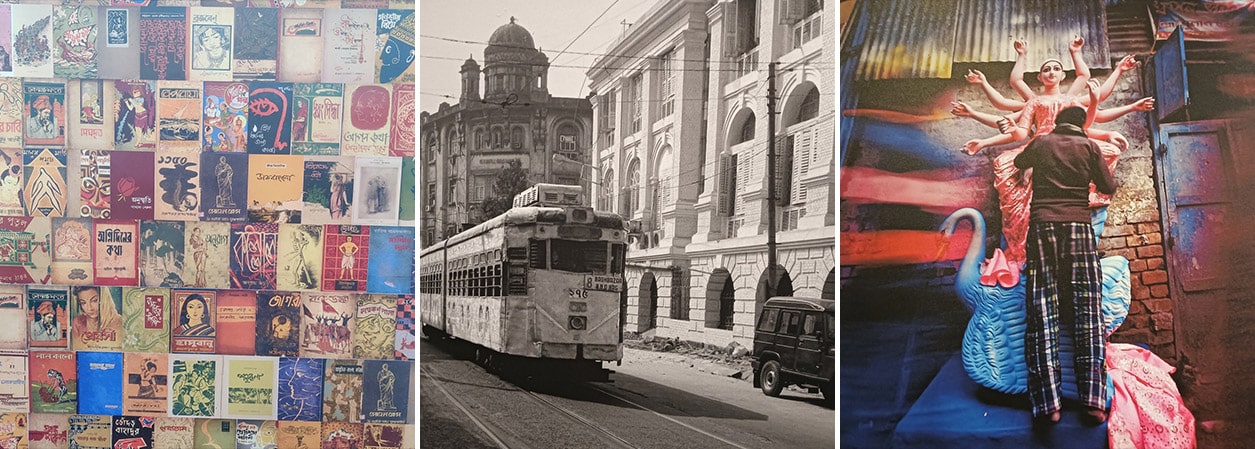
Why ‘Ami Kolkata’ Shouldn’t Be Missed
From the Travel Diary of Kuntil Baruwa, Explorer, Destination Knowledge Centre
Kolkata has a way of layering its stories, and one of the most surprising chapters of our Bridge the Knowledge Gap Study Tour was hidden inside the unassuming Metcalfe Hall. At first glance, the “Ami Kolkata” (I Am Kolkata) exhibition seemed like just another cultural showcase. But as we stepped inside, it quickly became clear—this wasn’t just an exhibition. It was a celebration of the city’s soul.
Sure, the exhibition has seen better days. The alponas (traditional floor art) leading up to the hall have faded, the interactive screens no longer work, and the lack of air-conditioning can be a challenge on a humid day. Yet, despite these flaws, “Ami Kolkata” was one of the most heartfelt experiences of our Study Tour.
The exhibition is laid out like a love letter to the city, with each section exploring a different layer of Kolkata’s identity. It takes you from its colonial beginnings to its modern-day chaos, weaving in stories of its multicultural communities, festivals, literature, and food. The staircase, lined with quirky vintage posters—Horlicks ads, old movie classics, and even a nod to Kolkata’s Chinatown breakfast culture—instantly made us smile.
What really struck us, though, was how beautifully the exhibition captures Kolkata’s diversity. You get a glimpse into the lives of communities like the Armenians, Jews, and Chinese, who all left their mark on the city. There’s also an entire section dedicated to the Bengali Renaissance, where the spotlight is on the thinkers, poets, and activists who gave the city its intellectual edge.
But what truly makes “Ami Kolkata” special is the way it tells the city’s story. It’s not just about monuments and milestones; it’s about people. From the grandeur of Durga Puja to the everyday joy of sipping tea at a roadside stall, the exhibition reminds you that Kolkata’s magic lies in its ability to embrace contradictions.
Our guide, Navpreet, added so much to the experience. Her stories tied the past and present together seamlessly, bringing the displays to life. She pointed out details we would have otherwise missed—like how the vintage Kolkata Biryani poster hints at the city’s unique culinary history, shaped by the exiled Nawab Wajid Ali Shah of Lucknow.
“Ami Kolkata” isn’t perfect, but maybe that’s what makes it so quintessentially Kolkata. The city has its cracks and imperfections, yet it still shines. This exhibition is a reminder of why Kolkata continues to hold a special place in the hearts of its people—and anyone who visits.
If you want to truly understand the spirit of Kolkata, this exhibition is a must-do. Come for the stories, stay for the nostalgia, and leave with a deeper appreciation of a city that’s so much more than just a destination.
Bridge the Knowledge Gap is an annual summer training programme that the Destination Knowledge Centre (DKC) has been organising since 2017. It aims to empower, educate, and share the collective knowledge of the DKC with the Tour Operations staff. The programme consists of a five-day in-depth classroom session in our Gurgaon office followed by a two-week on-ground study tour, ensuring that participants not only learn about destinations but also experience them first-hand.
Inspiration
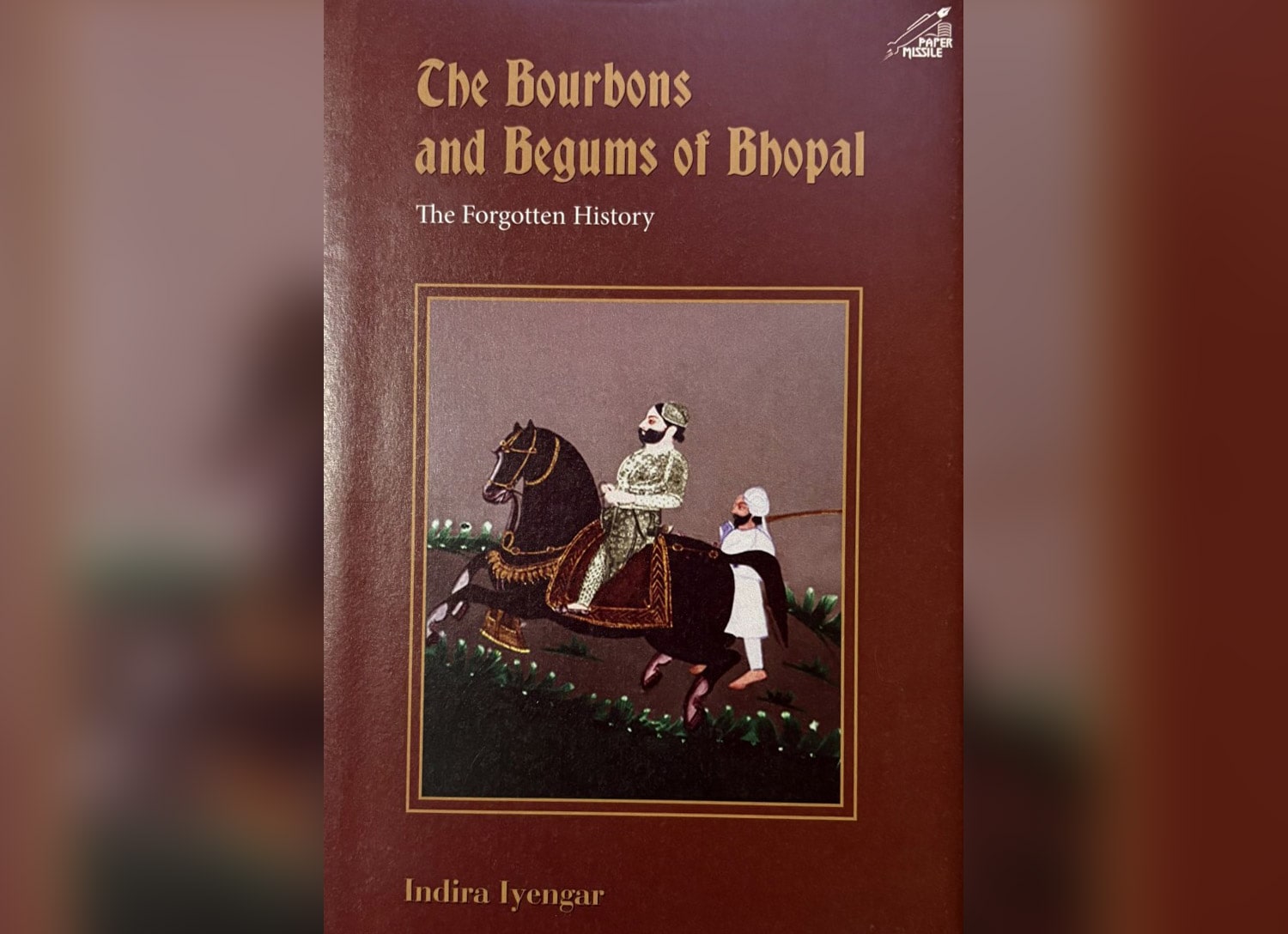
The Bourbons and Begums of Bhopal – The Forgotten History
Book Review by Soma Paul, Product Manager, Destination Knowledge Centre
Name of the Author: Indira Iyengar
Bhopal, my hometown, is a city of lakes with a fascinating French connection.
Most people don’t know this, but the city’s history is deeply connected to the rule of its Begums—four remarkable women who broke the norms of their time and ruled with power and vision. For over a century, they shaped Bhopal into what it is today. Right alongside them, the Bourbons, descendants of the French royal family, contributed with their bravery, wisdom, and diplomacy to the city’s development.
The Bourbons weren’t just well-connected; they were fiercely protective of Bhopal. Their military skills helped defend the city during wars. In the Begums’ court, they were key advisors, steering the city through some of its most difficult times. They acted as mediators between Bhopal and the British East India Company, ensuring the city’s sovereignty remained intact. Their influence didn’t stop there—they left a lasting imprint on Bhopal’s architecture. The Shaukat Mahal, with its mix of French and Indo-Islamic styles, still stands as a reminder of their legacy.
In The Bourbons and Begums of Bhopal, Indira Iyengar traces this remarkable history, drawing inspiration from her mother Magdaline Bourbon’s stories. The book explores the family’s arrival in India in the 16th century, their integration into Bhopal’s culture, and their role in its development. As someone who grew up in Bhopal, reading this book was like walking through my memories of the city – a place rich in history, character, and unique connections.
If you’re ever in India, don’t just rush through—take a moment to truly experience the magic of Bhopal and its untold stories.
Festival to Watch Out For
Rato Machhindranath Jatra
April 30 to May 07, 2025
Patan, Nepal
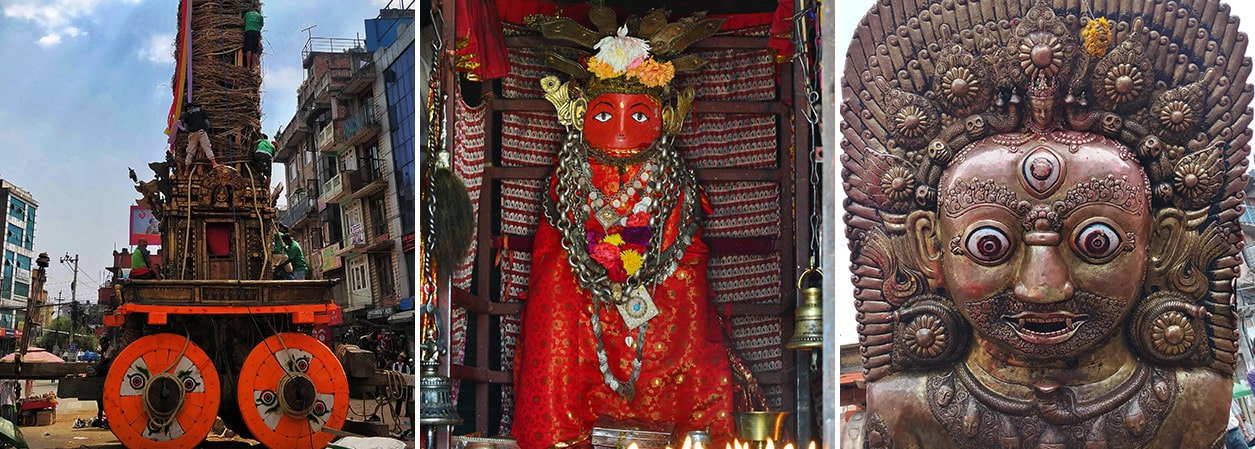
Highlights
- Dating back to the 7th century AD, this festival is one of the oldest and longest chariot festivals.
- The idol of Rato Machhindranath is taken out for a ‘yatra’ through the streets of Patan.
Rato Machhindranath Jatra is one of Nepal’s oldest and longest chariot festivals, dating back to the 7th century AD. In the ancient city of Patan, hundreds gather to participate in the sacred ritual of pulling a colossal, 48-foot chariot constructed from bamboo and wood. This magnificent chariot, with four massive wheels, bears the revered idol of Rato Machindranath, the embodiment of the Rain God in Nepalese mythology. The idol is venerated by Hindus and Buddhists alike and bears multiple names. During this rare and auspicious occasion, the chariot embarks on a remarkable journey, pulled for a month by devotees from Bungamati to Pulchowk, traversing scenic routes through Bhaisepati, Nakhu, Bhanimandal, and Jhamsikhel. There is a unique tradition in which women exclusively pull the chariot during a specific part of the procession. Legend holds that King Narendra Dev invited the deity from Assam to alleviate a devastating drought. The festival concludes with Bhoto Jatra, where a jewelled vest belonging to the god is displayed to the public.
Picture Gallery
Rato Machhindranath Jatra: Nepal’s Ancient Chariot Festival
As April concludes and the early days of May unfold, witness the ancient spectacle of the Rato Machhindranath Jatra, a month-long chariot festival in Patan, Nepal. A towering, 48-foot chariot bearing the idol of the Rain God is pulled by devotees through scenic routes, a ritual believed to end a drought.
RESOURCES
SITE LINKS
CONTACT US
+ 91 (124) 4563000
Tower B, Delta Square, M.G. Road, Sector 25, Gurgaon - 122001, Haryana, National Capital Region of Delhi, India


